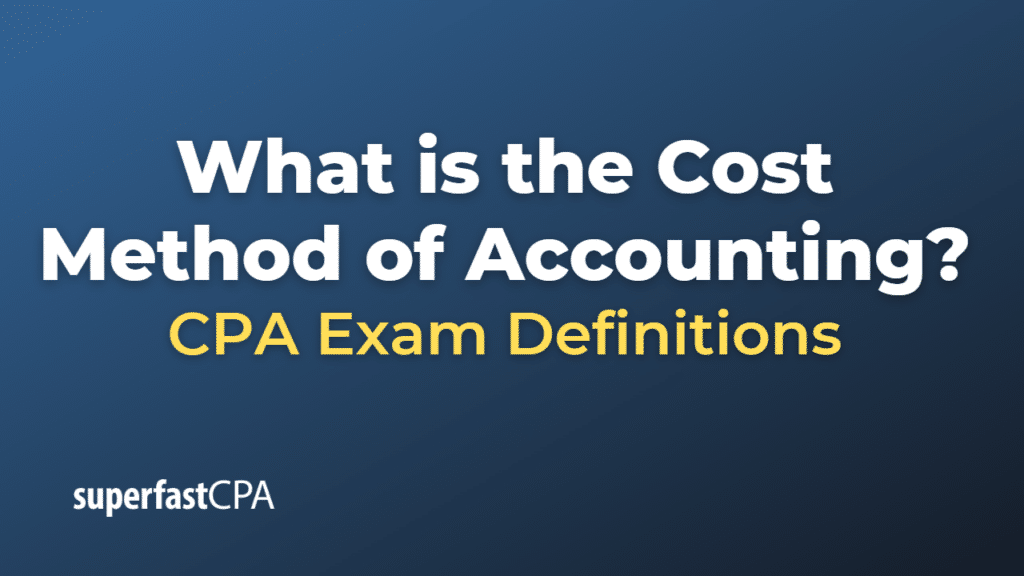Cost Method of Accounting
The cost method of accounting is an approach used when an investing entity holds less than 20% of a company’s stock, and it has no significant influence over the company it is investing in. Under the cost method, the investment is recorded at the original cost, and this cost remains on the books until the investment is sold.
Under this method, dividends received from the investment are recorded as income when they are received. These dividends are typically the only impact on income that the investor will see from the investment, as long as it is held.
For example, if Company A invests $10,000 in Company B’s stocks, it would record the investment at $10,000 on its balance sheet under “Investments.” If Company B later pays out $500 in dividends to Company A, Company A records this as dividend income.
It’s important to note that under the cost method, changes in the market value of the investment do not affect the investor’s financial statements. The investment remains on the books at its original cost until it is sold, even if its market value increases or decreases.
This contrasts with the equity method of accounting, which is used when an investing entity holds 20-50% of a company’s stock and has significant influence over the company. Under the equity method, the investment’s carrying value is adjusted to recognize the investor’s share of the investee’s earnings or losses, and dividends received are treated as a return of investment, reducing the carrying value of the investment.
Example of the Cost Method of Accounting
Let’s consider two fictional companies, Company A and Company B. Company A decides to invest in Company B by purchasing a 10% stake in its common stock. Since the ownership percentage is less than 20%, Company A will use the cost method of accounting for this investment.
- Company A purchases 10,000 shares of Company B’s common stock at $5 per share, for a total investment of $50,000. Under the cost method, Company A records the investment at its original cost of $50,000 on its balance sheet.
- At the end of the year, Company B declares and pays a dividend of $1 per share. Company A receives $10,000 in dividends (10,000 shares * $1 per share). Under the cost method, Company A records this $10,000 as dividend income in its income statement.
- During the year, the market value of Company B’s stock fluctuates, but these changes in market value do not affect Company A’s financial statements under the cost method. The investment remains on Company A’s balance sheet at its original cost of $50,000.
- If Company A later decides to sell its shares in Company B, any gain or loss from the sale will be recorded in Company A’s income statement at that time.
In this example, the cost method of accounting is used because Company A’s ownership stake in Company B is less than 20%, and Company A does not have significant influence over Company B. Company A records the investment at its original cost and recognizes dividend income when it’s received, but changes in the market value of the investment do not impact its financial statements.













